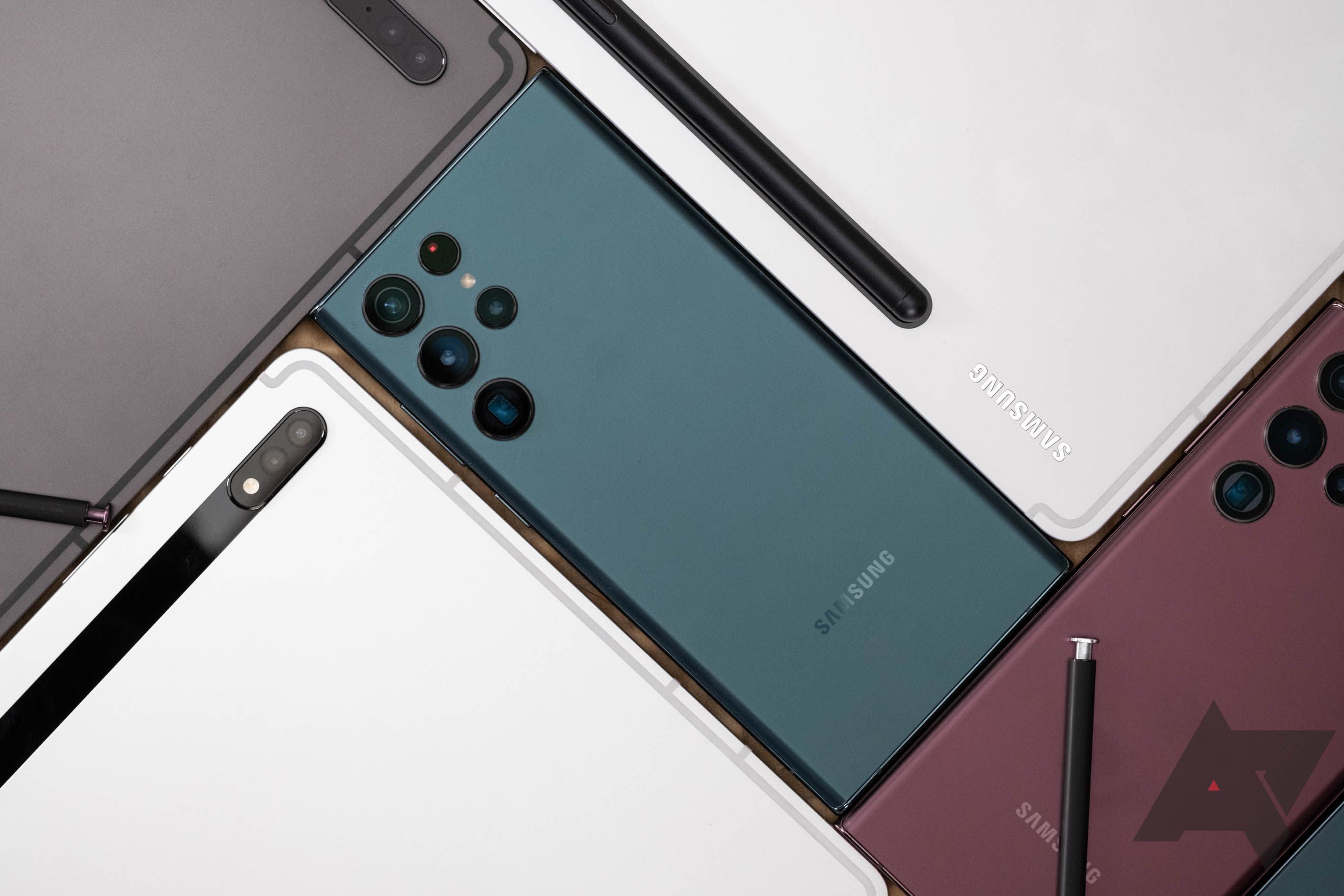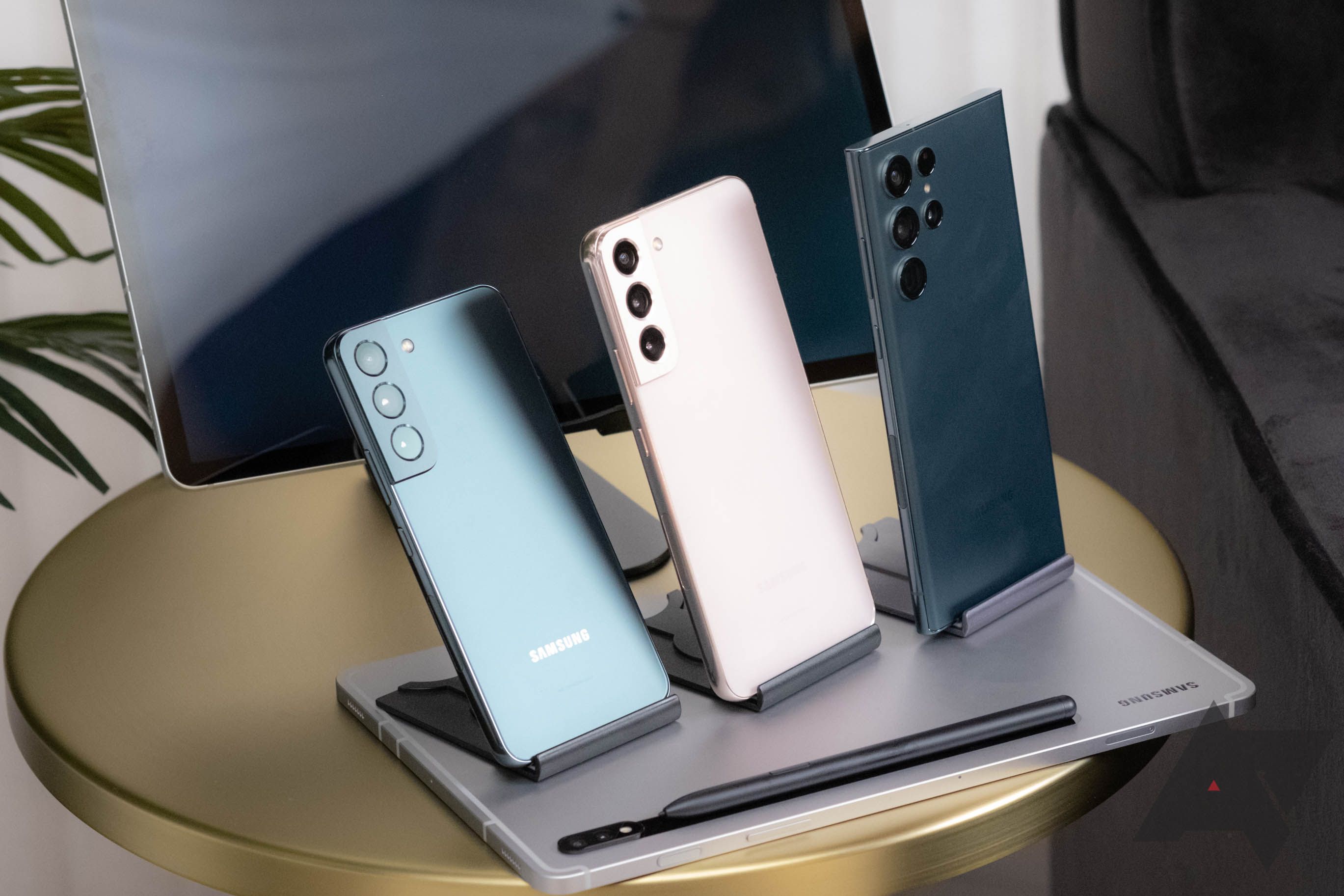We’re going to hear a lot of takes today that the Note series lives on under a new name in the Galaxy S22 Ultra. It’s true: Samsung is consolidating its lineup, so what we thought of as the Note is now the highest-end Galaxy S phone, but there’s more to it than just that. Samsung’s also cutting down the size of its traditional flagship lineup with the change, giving up on a cheaper Note and the old-style Galaxy S Ultra. It’s a change that leaves room for another smartphone category to grow: foldables.
This might sound like a stretch, but it tracks if you look at the company’s behavior over a bigger period of time. Not that long ago, Samsung’s mobile unit was rumored to be under a special management review, at least in part due to declining earnings in the mobile space. That may have been driven by declining interest in its flagship phones, and Samsung even fell off as the number one smartphone brand by volume for a month last year. It’s still on top, but competitors are slowly chipping away.
Conversely, some of Samsung’s biggest recent gains were explicitly attributed to its early success with foldables, enjoying 4x year-over-year growth in the new (and still ultra-premium) market.
As traditional smartphone sales at the high-end seem to be in decline for Samsung, and sales for foldables are up, the logic for continued growth would seem to be clear: Cut costs and investments in traditional flagships and invest more in folding phones. And with the S22 series, we’re seeing exactly the former, building on developments last year.
Let’s look at the timeline of events. In 2020, Samsung had five traditional phones at the high-end: The Galaxy S20, S20+, S20 Ultra, Note20, and Note20 Ultra. Although there were some other minor spec differences and improvements across the delayed release cycle between them, fundamentally, the Note20 Ultra was just an S20 Ultra with a stylus — Samsung was releasing the same phone twice at different times of the year.
For a long time that wasn’t a problem, and the Galaxy S and Note dichotomy has worked for Samsung for many years, with Note fans seemingly staying Note fans, and Galaxy S fans being a different market. But that started to change in 2020 as sales for the S20 series indicated a huge decline compared to the Galaxy S10. The market had shifted.
According to Anshel Sag, principal Analyst at Moor Insights & Strategy, there could be a lot of reasons for this. “Samsung's mid-tier and low-end have gotten considerably more diverse and waterfalled down more premium tier features, which may hurt some of Samsung's most expensive device sales, but may in the end drive the scale that Samsung needs to be successful overall,” he said.
“Samsung has more competition than ever in the premium tier from Chinese OEMs (even though I believe the S21 Ultra was the most complete smartphone of 2021). I think Samsung has also had a lot of internal struggles with management reshuffles and is still trying to pinpoint its strategy to compete in this new climate.”
Samsung doesn’t share sales metrics very often, but we know that the Note20 struggled to sell. And even though analysts claimed the Note10 was one of the company’s fastest-selling flagships, that was an isolated event amid generally negative analyst forecasts.
Now we know that 2021 furthered this decline in flagship sales, but there is some potential fudging to the analyst’s numbers given the later-than-expected Galaxy S21 FE release might have had, according to Sag, which could also admittedly affected the S20 series even though it was not as delayed.
Many factors may have contributed to this change, from reduced consumer spending in certain categories during the pandemic (potentially including smartphones), increased smartphone retention rates in recent years, and the impact of an Apple iPhone upgrade “Supercycle” with the iPhone 12. Whatever the precise cause may have been, the effect is clear: Samsung has been selling fewer high-end phones year-over-year, and consolidating the lineup is one way to fix that.
We don’t know exactly why there wasn’t a Note phone released in 2021— Samsung is tight-lipped about the subject — but this is one possible reason. In the face of declining sales, Samsung toyed with the idea of removing its own flagship’s competitor. Given the S21’s sales were even lower than the prior year’s, that doesn’t seem to have worked if it even was a motivation behind the cancellation — there’s no way to know for sure. But that brings us back to the rise of foldables.
Correlation is not causation, but Samsung is inarguably experiencing stronger growth in folding phones compared to its traditional flagships, and with reduced competition in the folding phone space, it could also have better margins, as well as higher prices for add-on purchases like Samsung Care+ and accessories. If Samsung is cannibalizing itself across its lineup (a legitimately big “if”), the Fold and Flip could be occupying part of the market space the Note series did. (Last year’s Galaxy Fold3 was even available with an optional S-Pen stylus, just like the Note, which could further cement this connection given the rise in sales.) But whether or not foldables occupy a similar Note-like place in customer’s minds, Samsung seems to be prioritizing its foldables as a source of profit growth at a similar price point. As a contextual bellwether, Samsung mentioned foldables nine times in its last earnings report — “Galaxy S” came up just four times.
In the face of this history and context, I feel there’s a clear direction indicated by this shift in 2022. Merging the Note in with the Galaxy S lineup seems like a safety move, filling the void with a stylus-equipped flagship at the high-end as the company otherwise cuts costs and consolidates its slabphone lineup, giving its foldables more room to grow. I don’t think $1000+ “Ultra” phones are going anywhere — Apple has made sure of that, and there is a demand for the best-of-the-best as a halo product, even if it may not sell at the same volume cheaper models might. But Samsung knows it has a strategic head start in the foldable space, and as a folding phone critic-come-convert, I know the form-factor has a future. Given the space in the market Samsung has freed up today by merging the Note line into the Galaxy S22 Ultra, Samsung clearly does too.


.JPG)
